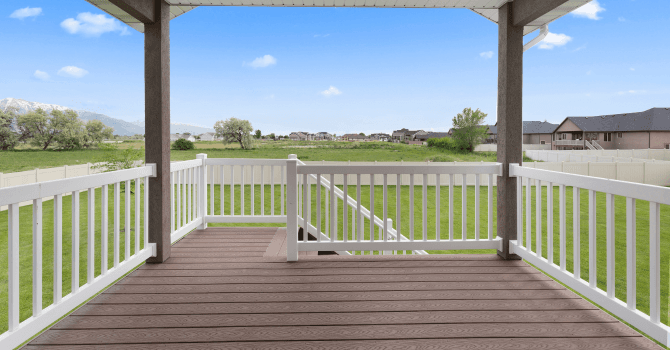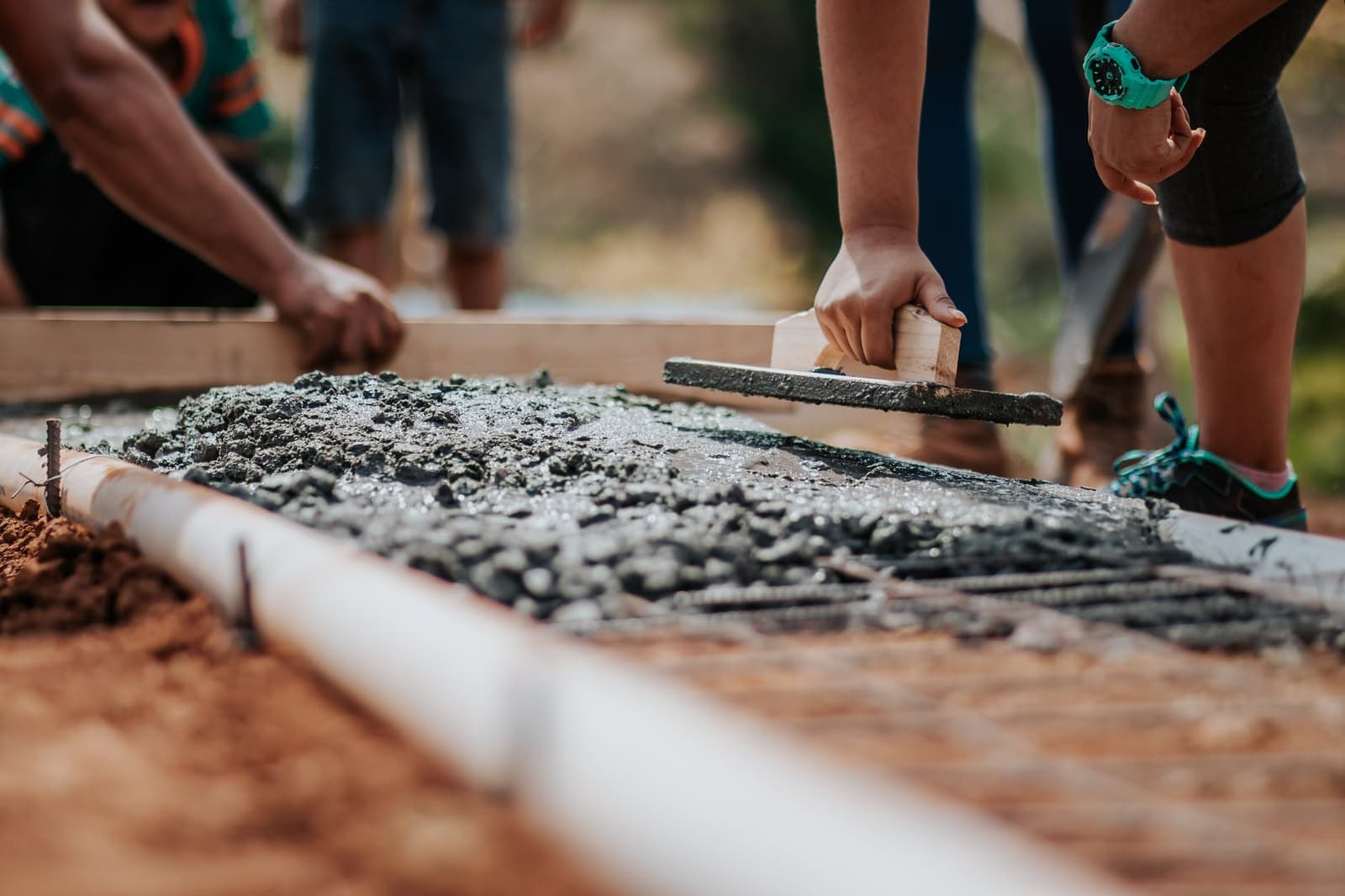
Is your deck finally ready but you’re still on the fence about what kind of railing best suits what you’re looking for?
Whether you’re fencing a pool, securing a balcony, deck, or elevated patio, or adding a feature to help you up and down the stairs, before choosing a railing, there are several factors to consider.
Beyond its primary role, which is ensuring your safety, railings add a certain flair to your property. Whether it be subtle or extravagant, basic or custom, it can, in turn, highlight a breathtaking view and double as a privacy guard.
Past aesthetics and durability, railings are subjected to several, must-know regulations to bypass any unforeseen circumstances. Here are a few pointers to help guide you toward the best decision possible.
Step One: Choose Your Deck Railings
Source: Canva
A Brief Deck Railing Glossary
Ramps: What is commonly referred to as ramps, albeit an incline, can also refer to a railing or handrail.
Guardrails: These are barriers installed to safeguard elevated platforms (balconies, mezzanines, stairs) preventing falls and also found on the side of highways, serving as shock-absorbers upon collisions.
Handrails: These are an integral part of the railing, and true to its name, where one holds on to when going up and down stairs.
Factors to Consider When Choosing Railings
When choosing a railing, one must not only take into account colour but also the house’s style. It’s the one detail that will make your balcony, deck, or patio blend in with your backyard perfectly.
For a look that’s as classic as can be, the handrail’s profile has to be big with rounded edges. For a more modern look, it has to be slimmer and rectangular. When it comes to highlighting a farmhouse-like home, an elaborate handrail will do the trick while a wood railing will shine in a rustic-inspired décor.
Here’s what’s trending right now:
Two-toned railings: The handrail is one colour while the railing is another. For a more traditional or sophisticated look, pair black and white. To customize or add some flair, pair lively colours.
Material combo: Wooden railings with wrought iron balusters are sought-after but just one of the many pairings possible. Let your imagination run wild.
Less is more—minimalism it is! A favourite for clean lines and unobstructed views of the outdoors.
Adding post caps: Both decorative and stylish, as well as functional and bright… The choice is yours!
Deck railings are retailed in a wide range of materials: wood, composite, aluminum, glass, wrought iron, etc. While style is important, remember that a railing's primary purpose is safety. As such, André Zapalski, Plastio Composite Decking & Patio, stated the following: “(...) the three main characteristics of a good material are durability, quality, and aesthetics.”
The Different Materials
Source: Canva
To help you choose, here’s a list of the most common materials along with their primary characteristics, as well as material pairings used to revamp your deck railings.
Aluminum Railing
Aluminum railings are very sought-after and time-proven. They’re also very resilient when it comes to harsh winters. Aluminum is rust-proof and doesn’t require any particular type of maintenance. It’s a timeless material that can be paired with just about any style while also being an asset, serving as a long-term investment. However, aluminum railings aren’t the most cost-effective products. As Zapalski, Plastio Composite Decking & Patio, mentioned, “While glass is the most expensive material, aluminum railings can cost $78 per linear foot.” Said cost includes installation.
Composite Railing
Just like decks, composite railings are sensible choices for those looking for a maintenance-free product. We especially like the wide range of colours retailed, promising a well-put-together result.
Wood Railing
Wood railings are practically timeless, showcasing a slightly rustic and natural-looking aesthetic, blending with the surroundings. Durable and retailed in various species and staples, such railings are without a doubt the most budget-friendly choice. The grain can be painted or stained to your liking for a custom look. However, wood railings must be regularly maintained (e.g. freshly stained every two years) to ensure durability and appeal over time.
The Aluminum and Wood Combo
The best of both worlds: the natural appeal of wood with aluminum’s durability. This combo is a winner on all levels.
Glass Railing
Glass railings are divinely sleek, showcasing the best of what your backyard has to offer. Both robust and durable, glass railings aren’t view-obstructing and are windbreakers when used on balconies. Put an end to closed-off areas; glass railings give off the impression that your balcony is bigger than it is. It also allows for great light for rooms looking out onto the deck, surely increasing the value of your property.
Wrought Iron Railing
Wrought iron railings make for an elegant add-on to any outdoor décor. They’re really robust and available in a wide range of shapes and can be endlessly personalized. Albeit more expensive compared to other products, wrought iron does require regular maintenance to prevent oxidation. After all…exceptional products do call for a bit more care.
PVC Railing
PVC railings are the most affordable. Such railings are easy to clean, but their finish tends to lose lustre over time. While choosing a model may seem interesting, when it comes to colour, said material remains rather limited in that department.
How to Install Deck Railings
Source: Canva
Installing Preassembled Railings
André Zapalski, Plastio Composite Decking & Patio, mentioned that prior to installing railings around your deck, you have to carry out the five following steps:
Establish your budget
Measure the perimeter
Get a quote
Acquire factory-made product
Plan railing installation
When choosing to work with professional services to install your railings, make sure that the hired professionals proceed according to Quebec’s Construction Code. Before the work is scheduled to start, inquire with your municipal authorities regarding whether a permit is required.
Once said steps are done, the next step is basically kids’ play for professionals. Zapalski, Plastio Composite Decking & Patio, mentioned that “The time needed to install railings is material dependent, but for a standard deck (10 feet by 10 feet), it will likely take 2 to 3 hours.”
If you’re a bit of a handyman yourself, you can carry out the installation yourself if you purchase preassembled railings, but make sure you have the following tools on hand:
Measuring tape
Carpenter’s square
Level
Saw
Drill
Hammer
When it comes to a standard installation, you first have to secure the posts, ensuring they’re evenly spaced out on the platform. Then, install the balusters, whether that be vertically or horizontally, depending on the model purchased. The bottom rails and handrails will allow you to secure the top part of the balusters, serving as supports. Note that railings sold in preassembled kits are easier to install, given that a lot of the steps detailed below were already done in manufacturing plants.
However, keep in mind that a baluster's resistance is entirely dependent on the selected model and the materials used during the manufacturing process, but especially the quality of the installation. A professional will be able to guarantee an installation that is standard-compliant in terms of pressure resistance.
Building Standard-Compliant, DIY Railings
Source: Canva
Have you chosen to build the railings yourself instead of going the preassembled model route? It’s not such a complex endeavour in itself, but you have to follow the current standards. These have been established to prevent falls. They’re meant to standardize height, stability, and shape. By complying with such standards, you’re ensuring the following:
Protect everyone from accidental falls
Prevent children from climbing the railing or jumping over it
Protect yourself (as the homeowner) from potential accident-related lawsuits
Before jumpstarting your project, measure the perimeter with precision. In your plan, detail the following elements:
Height of your deck, from the ground to the deck’s platform
Length and width of your deck
If your deck has steps, make a note of it on your plan, mentioning the width of the steps, the distance between the first and last step, and the stairs' angle
If the deck leads to a pool, plan for a gate with a lock
Here’s more information regarding the requirements that apply to railings based on the height of your deck from the ground:
Less than 24 inches: railings aren’t mandatory
Between 24 and 72 inches from the ground: the railing should be at least 36 inches (3 ft)
Over 72 inches off the ground: the railing has to be at least 42 inches (3.5 ft)
When the platform is pool-adjacent: the railing has to be at least 48 inches (4 ft)
When the staircase has more than 3 steps: it must also feature a handrail
If your house was built a few years ago, it may be that certain components aren’t compliant with current standards. When renovating, you will have to carry out the proper updates to ensure everything is standard-compliant as per Quebec’s Building Code. Otherwise, if an accident occurs on your property, you may be held liable.
Precautionary Measures
Your railings will have to be securely affixed to the deck’s platform. If you can’t screw the posts directly into the deck’s frame, use metal anchors or brackets specially designed for such a purpose.
The railings aren’t supposed to feature any horizontal components that can be climbed, and the distance between each baluster shouldn’t exceed 4 inches to ensure toddlers aren't able to stick their heads between them.
If you have a pool in your backyard, consider it an additional hazard. As such, installing railings and a gate with a locking mechanism is a must.
Get 3 quotes for your deck railing project
RenoQuotes.com can help you get quotes for your deck and balcony project. By submitting your project, we’ll put you in contact with top-rated contractors. Fill in the form on the homepage (it only takes a few minutes), and you will get estimates from trusted professionals.
Dial 1-844 828-1588 to speak with one of our customer service representatives.
Looking for something else?
Related articles
The latest industry news, interviews, technologies, and resources.

Editorial Team
•20 Sep 2024
A lean-to shed is an outdoor storage solution that’s both practical and cost-effective, ideal for homeowners looking to maximize the use of their space without compromising on aesthetics. Whether you’re a seasoned gardener, a craft-minded individual, or simply looking for a supplementary storage solution, discover how the lean-to-storage shed can transform your backyard into a practical and organized space.

Cynthia Pigeon
•07 Nov 2023
Soffits are a key part of your house’s roof design. Found under the edge of the roof, it often comes in the form of a ventilated aluminum panel. Placed horizontally, it is supported by profiles secured in the building’s structure and covers the entire eave, between the fascia and the siding.

Léa Plourde-Archer
•16 Apr 2024
Interested in growing closer to your family? Well, this may be the best option if you’ve considered living in a multi-generational home. It can’t be denied that times are tough on young people, old people and everyone in between.

Editorial Team
•07 Nov 2023
As we arrive at work each day, we’re hoping for things to run smoothly. Regardless of our title or position, the possibility of injury on the job is always around the corner.

Editorial Team
•07 Nov 2023
Looking to change your kitchen countertop? To achieve the desired result, thoroughly follow a series of well-defined steps. Without further ado, here's how to install your kitchen countertop just like a professional.